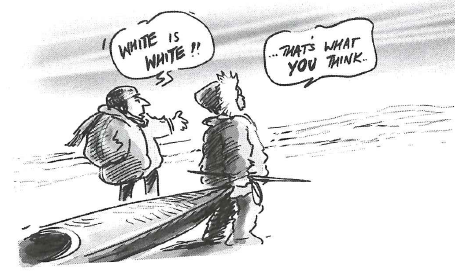4 Choosing to distinguish between complex situations and complex systems
Within some of the lineages of systems thinking and practice (which we briefly look at in Week 6), the idea that complexity is a property of what is observed about some ‘real world’ system, is known as classical or type 1 complexity. Exploring type 1 complexity, Russell Ackoff (1981, pp. 26–33) claimed for a set of elements to be usefully viewed as a system, it was necessary that:
- the behaviour of each element of the set should have an effect on the behaviour of the whole set
- the behaviour of the elements, and their effects on the whole set, should be interdependent
- however subgroups of the elements are formed, each subgroup should have the same effect on the behaviour of the whole and none should be completely independent.
Following in the footsteps of Ackoff, and with others, Schoderbeck et al. (1985) described the complexity of what they regarded as a real or physical system as arising from the interaction of:
- the number of elements comprising the system, for example, the number of chips on a circuit board
- the attributes of the specified elements of the system, for example, the degree of proficiency of musicians in an orchestra
- the number of interactions among the specified elements of the system, for example, the number of neuronal connections in the brain
- the degree of organisation inherent in the system, for example, the social arrangements in a beehive or an ants’ nest.
They regarded systems as ranging from living organisms to individual families and governments.
Type 1 classification was subsequently regarded as insufficient by other practitioners because it excluded any complexity arising from culture and from human behaviour. Nor did it encompass the complexity arising from the properties of the observer, as discussed earlier (and as exemplified by the language used in the list above, these authors saw ‘systems’ as real entities existing in the world).
Systems theorists have in the past had to confront some of the same issues as complexity theorists began to confront during the 1990s. The issues they confronted can be put rather bluntly as a series of questions:
- Do systems exist ‘out there’ in the so-called ‘real world’?
- Do systems have certain properties, some of which can be described or classified as complex and some as simple?
- Are systems distinguished by an observer in a context? Is systemicity, the quality of being a system, a choice made by an observer when they perceive complexity in a ‘real world’ situation?
- What can you learn about a situation you experience as complex by engaging with the situation using a process of inquiry that formulates systems of interest?
These are not questions that have definitive answers. In essence they reflect the differences between the epistemological use of systems as noted in Week 1 and used throughout this course with a more ontological use of systems (ontology being the philosophical study of the nature of being, becoming, existence or reality as well as the basic categories of being and their relations) that features in systems science and discussion of complex adaptive systems.
The view I/you choose to adopt will, however, have implications for my/your systems thinking and my/your systems practice. Exploring these implications will assist in deciding what course of action will work best for any particular practitioner.
This issue of identifying and naming systems and of comparing such named systems in different ways is the subject of Week 3: Identifying systems of interest.

